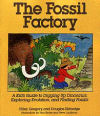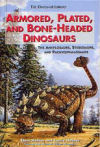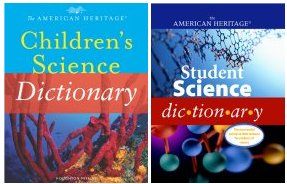Dinosaur Dig Additional Information
Information about the 2006 dinosaur dig at the 5E Ranch can be found at www.montanadinosaurdigs.com/sauro.htm (Judith River Dinosaur Institute).
Perkins, Sid. 2006. Bone hunt. Science News 170(Aug. 26):138-140. Available at http://www.sciencenews.org/articles/20060826/bob10.asp.
Books recommended by SearchIt!Science:
 |
The Fossil Factory: A Kid’s Guide to Digging Up Dinosaurs, Exploring Evolution, and Finding Fossils— Niles Eldredge
Published by Addison-Wesley Publishing Co., 1989.
If you think that fossils are dinosaur bones, you’re partly right. There are fossils of lots of other things, too—grains of pollen, sea creatures, even human beings! How can you find fossils on your own? With black-and-white, cartoon-style drawings and a humorous writing style, a world-famous scientist and his teenage sons explain how fossils are formed, where you can find them, and how to take care of them. Along the way, they also offer a few chuckles as well as fascinating information about the history of life on Earth, the way rocks and continents formed, and what Earth was like during the age of the dinosaurs. Twelve activities—including instructions for making a plaster cast of your own footprint—are featured, too, along with step-by-step diagrams. At the end, a timeline shows how life forms evolved over millions of years. |
 |
Armored, Plated, and Bone-Headed Dinosaurs: The Ankylosaurs, Stegosaurs, and Pachycephalosaurs— Thom Holmes
Published by Enslow Publishers, 2002.
What are the origins of these spiny, armor-plated dinosaurs? What were their feeding habits? How did they defend themselves? Explore the anatomy and physiology of these creatures that are now extinct. |
Power Words
estuary The wide lower end of a river where it flows into the sea. The water in estuaries is a mixture of fresh water and salt water.
fossil The hardened remains of traces of plant or animal that lived long ago. Fossils are often found in sedimentary rocks.
paleontology The scientific study of life in the past, especially through the study of fossils.
sauropod One of the two types of saurichian dinosaurs, widespread during the Jurassic and Cretaceous Periods. Sauropods were plant-eaters and often grew to tremendous size, having a stout body with thick legs, long slender necks with a small head, and long tails. Sauropods included the apatosaurus (brontosaurus) and brachiosuarus.
sedimentary rock A rock that is formed when sediment, such as sand or mud, becomes hard. Sedimentary rocks form when sediments are collected in one place by the action of water, wind, glaciers, or other forces, and are then pressed together. Limestone and shale are sedimentary rocks.
stegosaurus or stegosaur Any of several plant-eating dinosaurs of the Jurassic and Cretaceous Periods. Stegosaurus had a spiked tail and an arched back with a double row of large, triangular, upright, bony plates. Although stegosaurs grew to 20 feet (6.1 meters) in length, they had tiny heads with brains the size of a walnut .
Copyright © 2002, 2003 Houghton-Mifflin Company. All rights reserved. Used with permission.
